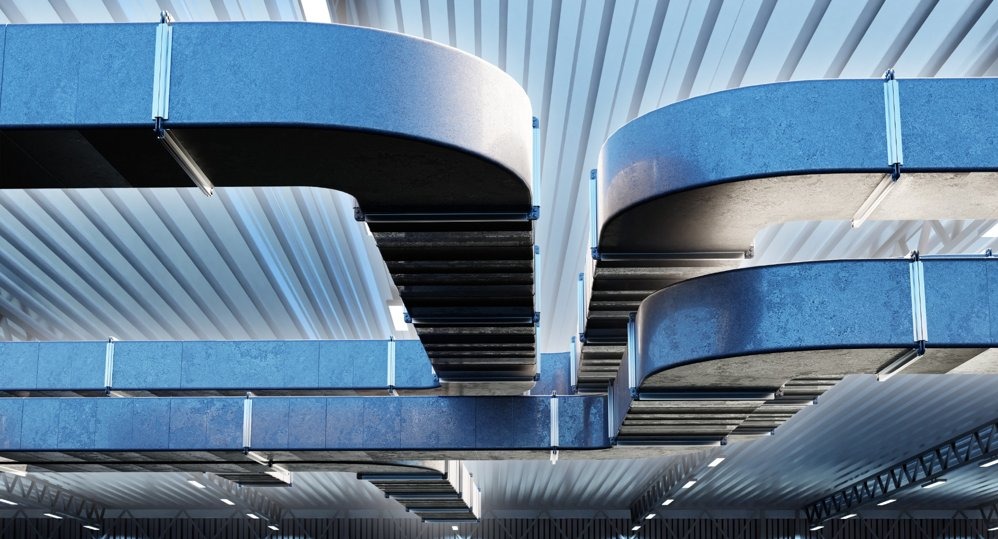Advanced Photocatalytic Technology For Air Purification And Sustainable Applications

KEY INFORMATION
TECHNOLOGY OVERVIEW
Traditional air purification methods rely on consumable filters (HEPA, carbon) that require frequent replacement or UV-C systems that consume high energy, leading to high maintenance costs and inefficiencies in long-term air quality management. Poor indoor and outdoor air quality is a major health and environmental concern, contributing to respiratory diseases, allergies, and long-term conditions i.e asthma and cardiovascular issues.
This photocatalytic air purification technology offers a maintenance-free, energy-efficient solution for sustainable air quality management by integrating porous ceramic nanolayers with LED activation to effectively remove VOCs, odors, pathogens (viruses, bacteria, fungal spores), and harmful gaseous pollutants like NOx and SO₂. Unlike conventional HEPA or carbon filters that require frequent replacement or UV-C systems that consume high energy, this innovation eliminates the need for consumables and intensive maintenance, reducing operational costs while delivering up to 99.99% pollutant removal efficiency. Designed for manufacturers of HVAC systems, air purifiers, and air quality solutions across healthcare, food processing, agriculture, automotive, and residential industries, this technology meets the growing demand for sustainable, cost-effective, and health-conscious solutions. Its scalability and adaptability make it an ideal choice for industries prioritizing clean air, regulatory compliance, and environmental responsibility, providing a future-proof alternative to traditional air purification methods.
Technology owner is looking for collaborations with device manufacturers (HVAC, air purifiers, home appliances), agricultural and food storage facilities, healthcare institutions, industrial and commercial building developers for R&D, licensing, piloting or licensing.
TECHNOLOGY FEATURES & SPECIFICATIONS
Advanced Photocatalytic System
- Comprises porous ceramic nanolayers coated with photocatalytically active titanium dioxide (TiO₂) nanoparticles or other nanomaterials.
- Effectively degrades VOCs, odors, and airborne pathogens.
LED-Activated Photocatalysis
- Uses UV-A LED or visible LED light sources with optimized radiation intensity (15-25 mW/cm²) for high efficiency.
- Low energy consumption
Customizable & Scalable Design
- Photocatalytic layers available in various dimensions and geometries for integration into:
- HVAC systems
- Standalone air purifiers
- Embedded appliances and lighting fixtures
- Modular LED systems ensure uniform activation and adaptability to different airflows and device configurations.
Long Lifespan & Low Maintenance
- Up to 50,000 operational hours, reducing frequent replacements.
- No consumable filters, lowering operational costs and waste generation.
Safe & Sustainable
- No harmful byproducts, making it safe for use in occupied spaces.
POTENTIAL APPLICATIONS
This advanced photocatalytic technology can be deployed across multiple industries, offering versatile solutions for air purification, disinfection, and pollutant reduction. Its customizable nature enables integration into a wide range of products, making it suitable for diverse markets:
HVAC Systems:
- Centralized and decentralized heat / energy recovery ventilators (HRV / ERV).
- Residential air conditioning and ventilation systems.
- High-efficiency air purification in residential buildings.
Home Appliances:
- Air purifiers and humidifiers for residential use.
- Refrigerators for odor elimination and food freshness.
- Kitchen exhaust systems for grease and odor control.
Agriculture and Food Industry:
- Greenhouses and vertical farms for mold prevention and air quality.
- Food storage and transport facilities to extend the shelf life of produce.
- Wine cellars and cold storage units for ethylene gas removal.
Healthcare and Hospitality:
- Hospitals, clinics, and care homes for pathogen reduction and disinfection.
- Hotels, elevators, and public spaces for odor and disease control.
Automotive and Transport:
- In-cabin air quality systems for vehicles, planes, trains, and buses.
- Air purification solutions for logistics and refrigerated transport.
Industrial and Commercial Applications:
- Cleanrooms and laboratories requiring controlled air environments.
- Office spaces to improve employee health and productivity.
This technology enables the development of innovative products that meet growing demands for sustainable, safe, and efficient air purification solutions.
Market Trends & Opportunities
The global air purifier market, valued at $13.5 billion in 2022, is projected to grow at a 7.3% CAGR, reaching $23.7 billion by 2030. The photocatalytic oxidation segment, aligned with this technology, is expanding even faster at 12.29% CAGR, with an estimated market size of $2.85 billion by 2030. This growth reflects the rising demand for energy-efficient, maintenance-free air purification solutions.
Unique Value Proposition
Unmatched Price and Efficiency: This technology provides significantly better performance at a fraction of the cost compared to competing photocatalytic materials. Its optimized production process ensures cost-effective scalability while maintaining superior efficiency, making it the most competitive option in the market.
Maintenance-Free Operation: With a lifespan of up to 50,000 hours, the photocatalytic materials require no replacements, eliminating ongoing maintenance costs and downtime associated with HEPA filters and UV-C lamps.
Energy Efficiency: This system consumes up to three times less energy than UV-C-based air disinfection systems, offering substantial cost savings and aligning with global sustainability goals.
Comprehensive Pollutant Removal: The technology addresses a broader range of contaminants, including volatile organic compounds (VOCs), gaseous pollutants (e.g., SO₂, NOx), pathogens (bacteria, viruses, fungal spores), and odors, outperforming all alternatives.
Safety and Eco-Friendliness: Unlike UV-C or ozone-based systems, this technology operates safely in occupied spaces, producing no harmful by-products and adhering to environmental standards.
Flexible Integration: Its compact and lightweight design allows seamless integration into diverse products, including HVAC systems, appliances, automotive air purifiers, and industrial solutions, enabling innovative designs and applications.
